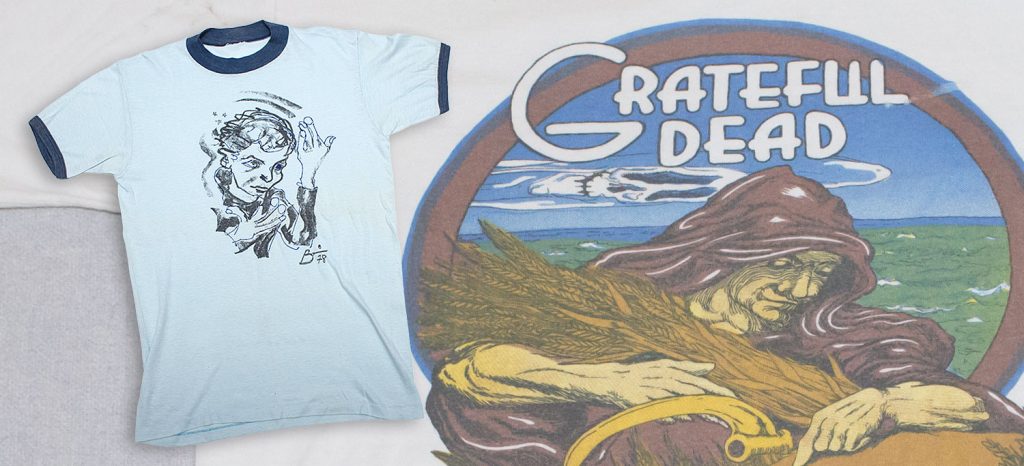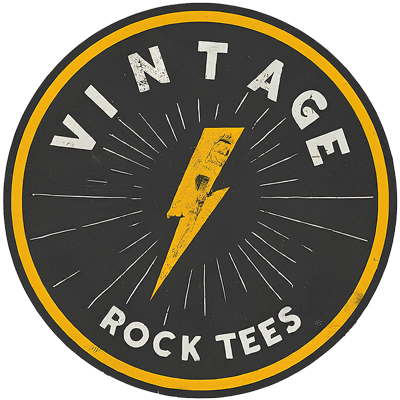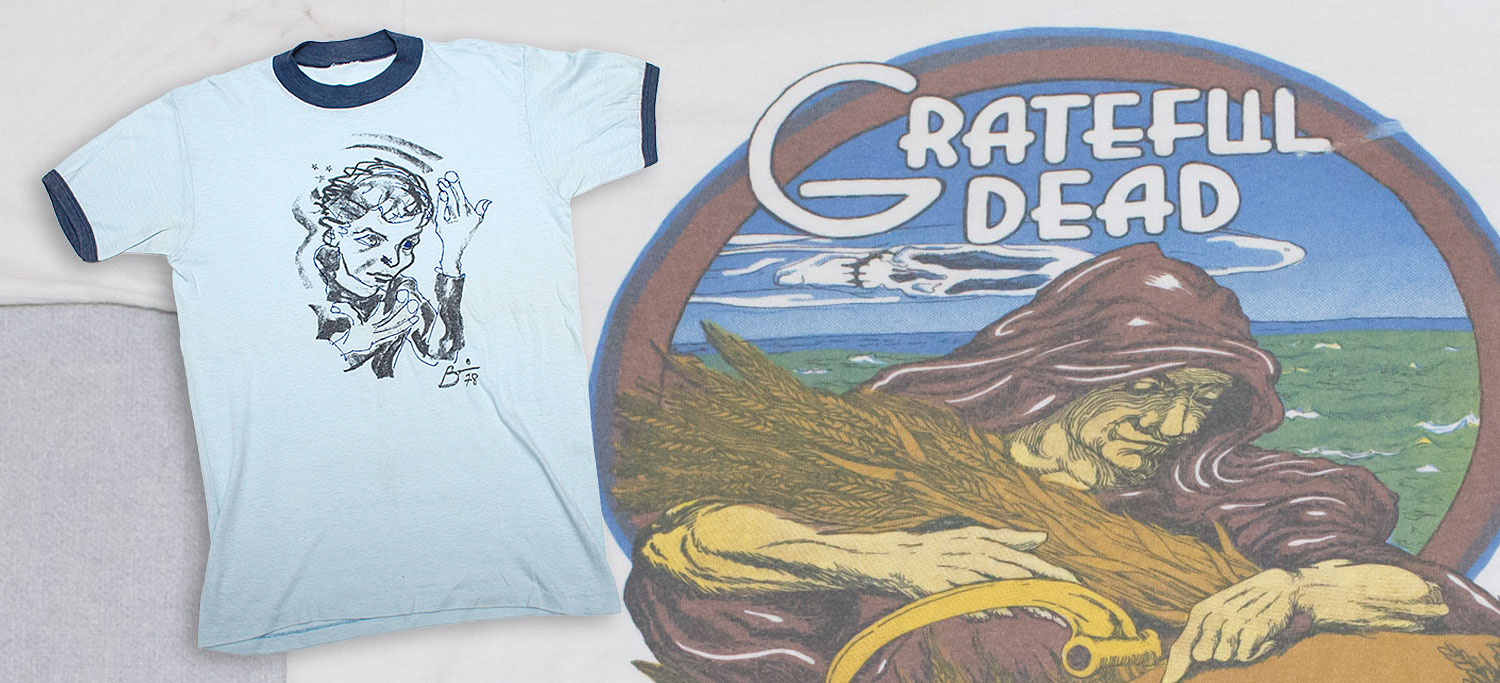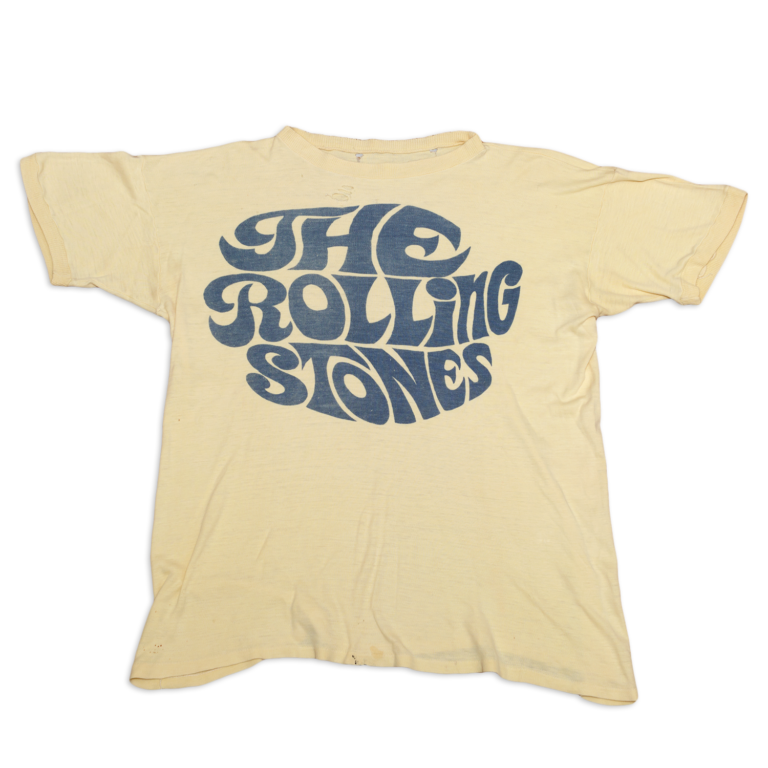5 Things You Need to Know About Vintage Rock T-shirts

So you found an old rock t-shirt and now want to know a little bit more about what it is? You’ve come to the right place. This comprehensive guide on vintage rock shirts will cover the various types of tees that exist.
Back in my days as a photojournalist I would take a picture, come back to the newsroom, and then select which photo would go with the story. Before I’d write the caption to accompany the picture I’d ask the question – who, what, when, where, and why?
The same question can apply to any given rock tee that I come across. In this article we’ll break down those questions as they pertain to a vintages tees.
The Who
Not to be confused the the band by the same name, the who is probably what is going to matter the most when it comes to the value and desirability of any vintage rock shirt.
Simply put, certain bands and performers are just more desirable to collectors than others. It’s not necessarily a popularity contest either. Bands like the Eagles and Boston sold way more albums throughout the 70s than the Rolling Stones did. But, if you look at the collectibility of the shirts and memorabilia from the same era, the Stones are far more in demand.
What Kind of Shirt is it?
There are several different types of shirts that can all be encompassed under the genre of vintage rock t-shirts. For this article we’ll discuss the most common types, but stay tuned for deeper dives into each sub category.
Tour / Concert Shirts
The most common and popular type of shirts that are out there are concert or tour t-shirts. These are the shirts that were sold officially through the bands at the venue. You’ve seen them at the merch table at every concert you’ve been to. These are the types shirts that were sold there.
In most cases tour shirts feature unique artwork on both sides of the shirt. These were designed before the tour with the express purpose of being sold at the concerts.
Tour Shirt Checklist
- Features the band name prominently
- The name of the tour
- The year of the tour
- The dates and/or cities on the tour
Bootleg Shirts
Next there are bootleg t-shirts. These were sold in the parking lot by entrepreneurial folks with custom made artwork for the band or tour. There are some really cool vintage bootleg concert t-shirts out there.
Usually the the ink for these is a bit thicker than that of official tour shirts. The quality of the actually cotton for these shirts was usually sub par. When they would come into contact with a dryer these shirts would often meet their end.
If you see a shrunken and misshaped 70s rock t-shirt that looks like it would probably only fit a 3rd grader, it’s likely a vintage parking lot bootleg. On the flip side, if you can find one that has been well cared for, you might have a very cool and unique shirt that is actually still wearable.
Souvenir Shirts
Souvenir t-shirts are up next. For the most part these are going to be shirts purchased through fan clubs, mail order forms, or record shops. Most of the time these shirts are truly vintage rock tees. Sometimes however they can be misleading.
For example, in the 19980s Iron Maiden would make specific event shirts for every show. The artwork was amazing and would usually be tied into the location of the concert. They only sold these shirts at that specific show. But, in the late 80s though they began to sell t-shirts with the same artwork via mail order. While these shirts would be considered vintage, they aren’t as rare as the actual tour event shirts where were sold only at the shows.
Crew Shirts
Long before the days of the seemingly infinite shirt designs to choose from, the only type of shirt for a given tour would be a staff or crew t-shirt.
Crew shirts were originally made as a practical solution to easily identify those who were working on any given tour or concert. They were never available to the general public and having a crew shirt could be seen as a badge of honor.
One of the most iconic crew shirts to ever exist would be the Woodstock staff t-shirt. Those came in four different colors and each color correlated with the job the person who wore had at the festival. They can be seen throughout the Woodstock movie and in loads of pictures.
Security was another reason promoters began to print up staff shirts for concerts. It wasn’t uncommon for there to be clashes between concert goers and police in the 60s and early 70s. One way to reduce the tension was to have plainclothes police serve as security. On occasion there were shirts printed up for this purpose.
Promotional Shirts
In the 1970s radio stations reigned supreme over the rock n’ roll landscape. Disk jockeys were the tastemakers and getting airtime for an album could make or break it. There are several stories of amazing bands that simply weren’t promoted properly and never saw the rock stardom that they deserved (Moby Grape and Big Star).
Promotional t-shirts were a clever way that record labels promoted bands and albums. The shirts essentially provided walking billboards for the “products” they were promoting. For the most part the vintage promo shirts that I’ve come across have been for specific albums. Odds are record companies gave them to local dj’s and record store employees as a way to try and pump their newest releases at the time.
When is the shirt from?
If you have a shirt from the 60s, 70s, or 80s, that is definitely vintage, no question. But, what if it’s something a little newer than that?
The answer to when a shirt is considered vintage is a bit of a subjective one. While there is no definite answer, the general consensus among collectors would be when a shirt somewhere between two and three decades old. We’ll just split the difference here and say that if a shirt is 25 years old its considered vintage.
In recent years the collectibility of shirts from the early 90s has skyrocketed from where it was just a few years back. There are all sorts of reasons why, but it also fits within that two to three decade old timeframe.
Where is the shirt from?
Where a shirt is from can greatly determine the desirability. Was it a famous show? Could it be perhaps from a band’s final show or tour? Or what about a venue?
All of those factors are things to think about when trying to get a grasp on vintage rock t-shirts.
I’d also include pop festivals and venue specific shirts here as well. In the late 60s there were a lot of festivals and most of them had shirts made up for either the crew or for merchandising purposes.
The same could be said for venue shirts, most famously the Fillmore East and Fillmore West. These were given to staff to wear at the venue. They were also given traveling musicians and their crews as a way to promote the venues.
The Why?
The “why” is always the last question I ask myself when looking at an old shirt. Often it is in the context why a particular shirt would have been created. This question comes up when I’m trying to determine the authenticity of a particular shirt.
It doesn’t matter what you collect, whether it’s music memorabilia, watches, or vintage wine, there are forgeries out there. The sad truth is that people are willing to go to great lengths to create fakes. The more valuable something is, the more incentive there is for people with bad intentions.
This is where the “why” comes into play. Does the graphic look right for the time period? What about the type of shirt? How about the verbiage? Does the wear and tear of the graphics match that of the shirt it’s printed on? All of this must be considered and scrutinized, especially when buying shirts online.
We’ve all made mistakes and gotten burned a time or two on a fake vintage shirt. If you’re just starting out, odds are it will happen. Like anything in life though you will learn more from the mistakes than you will the successes.
Do you have a vintage rock t-shirt?
In wrapping things up I hope this guide give you a good idea of what you might take into consideration when researching vintage rock tees.
If you found some old shirts or have something that you would like me to take a look at please feel free to reach out. I purchase individual shirts or entire collections.


